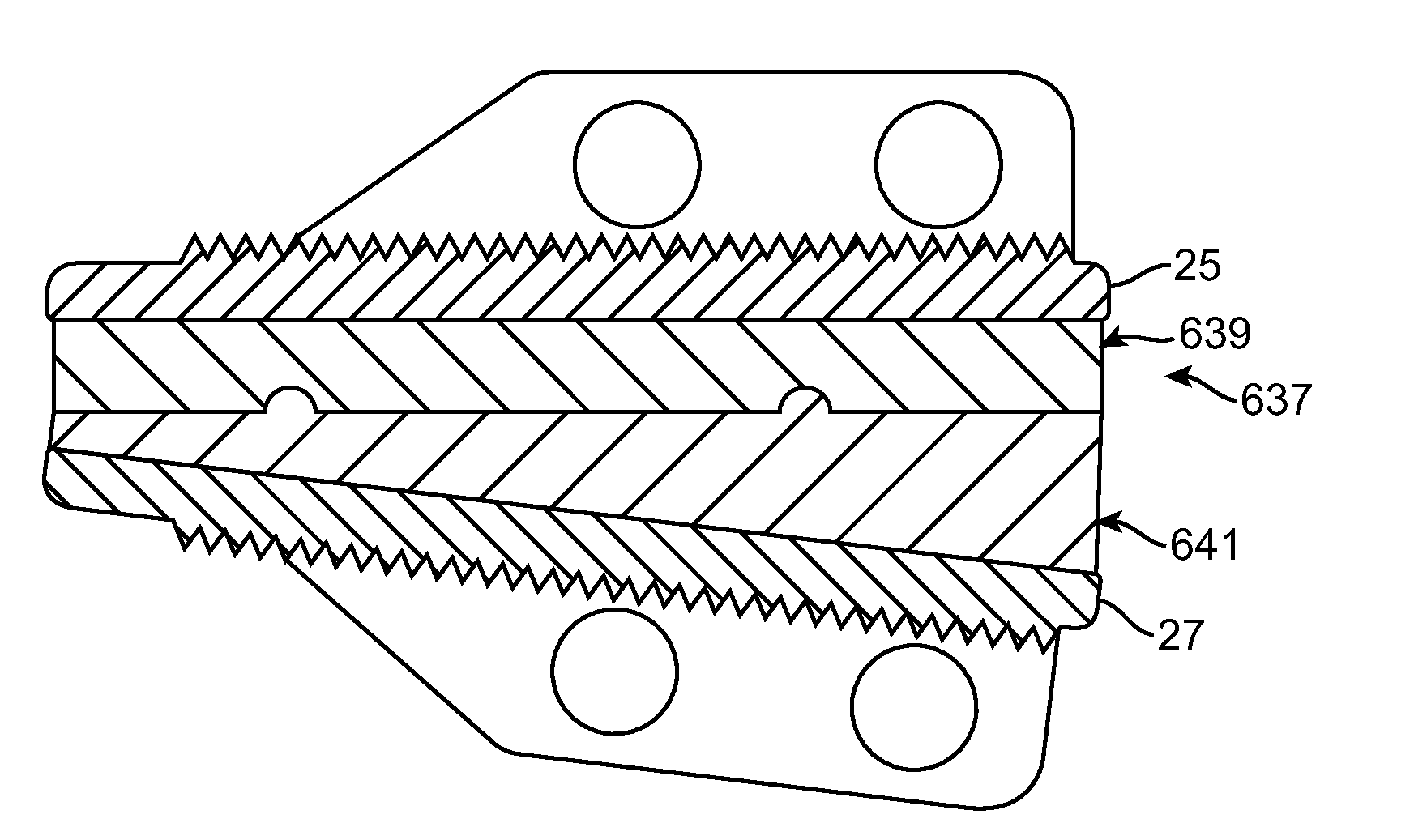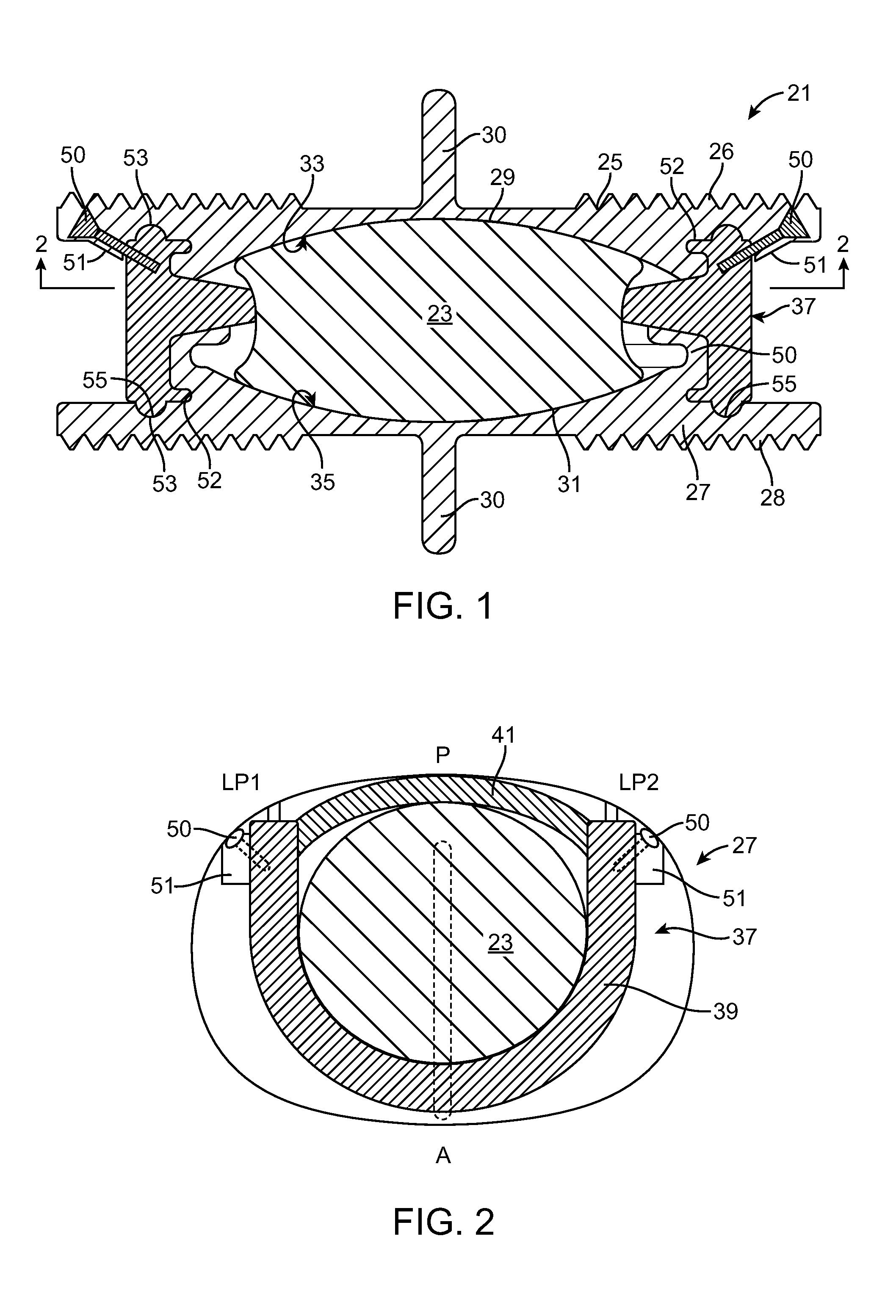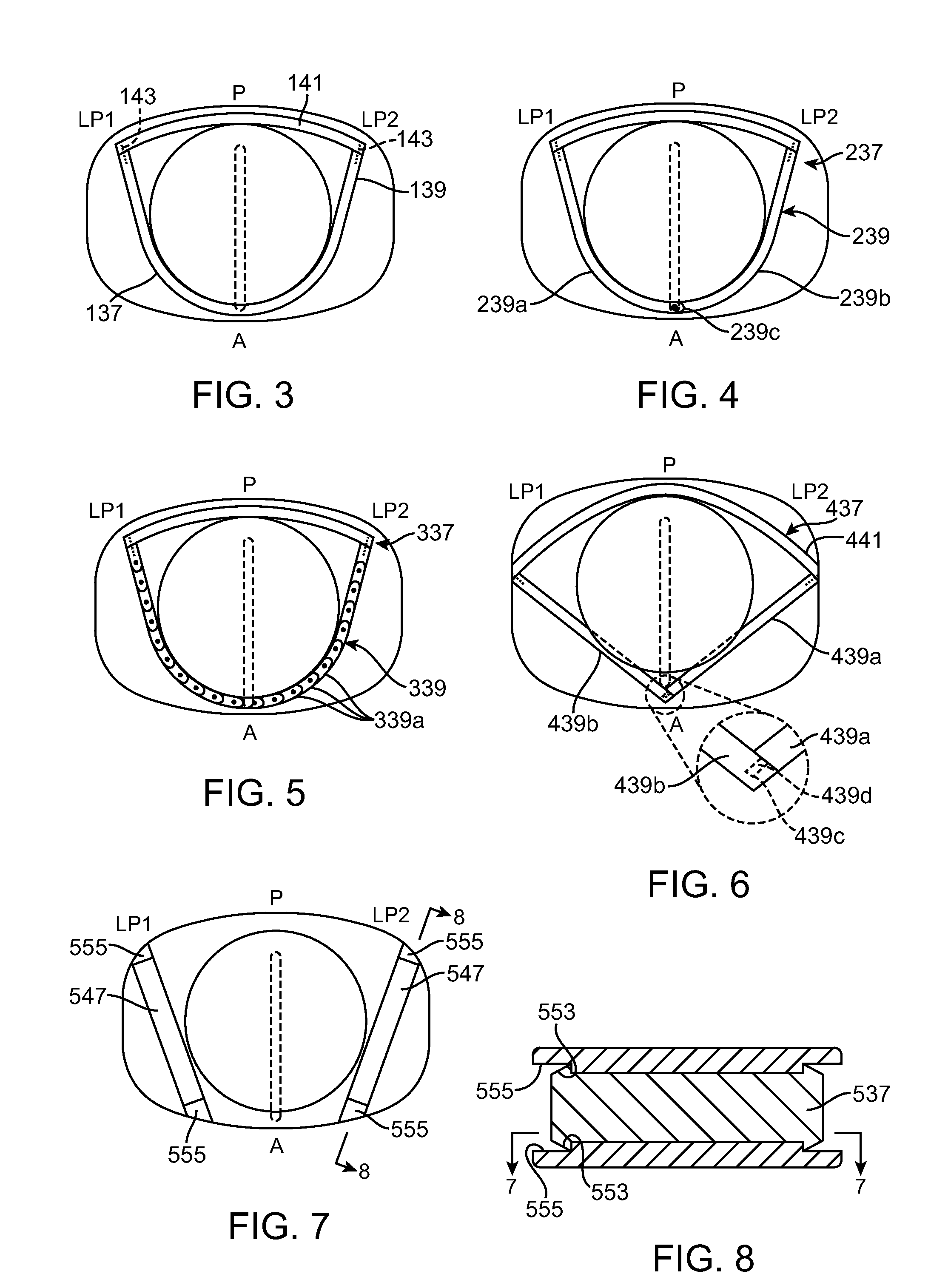Motion Limiting Insert For An Artificial Intervertebral Disc
a technology of intervertebral discs and inserts, which is applied in the field of intervertebral discs and devices and methods for limiting the motion of artificial intervertebral discs, can solve the problems of back pain that takes an enormous toll on the health and productivity of people around the world, degeneration and/or dysfunction of one or more intervertebral discs,
- Summary
- Abstract
- Description
- Claims
- Application Information
AI Technical Summary
Benefits of technology
Problems solved by technology
Method used
Image
Examples
Embodiment Construction
[0027]An artificial spinal disc 21 according to an aspect of the present invention for insertion in a patient is seen in FIGS. 1 and 2. The disc comprises a core 23 disposed between an upper plate 25 and a lower plate 27. The core 23 has upper and lower convex articulation surfaces 29 and 31. The upper and lower plates 25 and 27 have concave surfaces 33 and 35 corresponding to the convex surfaces 29 and 31 of the core 23 to permit relative motion of the upper and lower plates via sliding of the upper and lower plates on the core. A motion limiting insert or spacer 37 as will be described herein can be added to the artificial disc 21 after the artificial disc has been implanted in a patient. The motion limiting insert 37 is implanted in a surgery subsequent to the original disc replacement surgery in order to limit, restrict or eliminate motion between the upper and lower plates 25 and 27. The motion limiting insert 37 can be inserted in a minimally invasive procedure and can avoid t...
PUM
 Login to View More
Login to View More Abstract
Description
Claims
Application Information
 Login to View More
Login to View More - R&D
- Intellectual Property
- Life Sciences
- Materials
- Tech Scout
- Unparalleled Data Quality
- Higher Quality Content
- 60% Fewer Hallucinations
Browse by: Latest US Patents, China's latest patents, Technical Efficacy Thesaurus, Application Domain, Technology Topic, Popular Technical Reports.
© 2025 PatSnap. All rights reserved.Legal|Privacy policy|Modern Slavery Act Transparency Statement|Sitemap|About US| Contact US: help@patsnap.com



